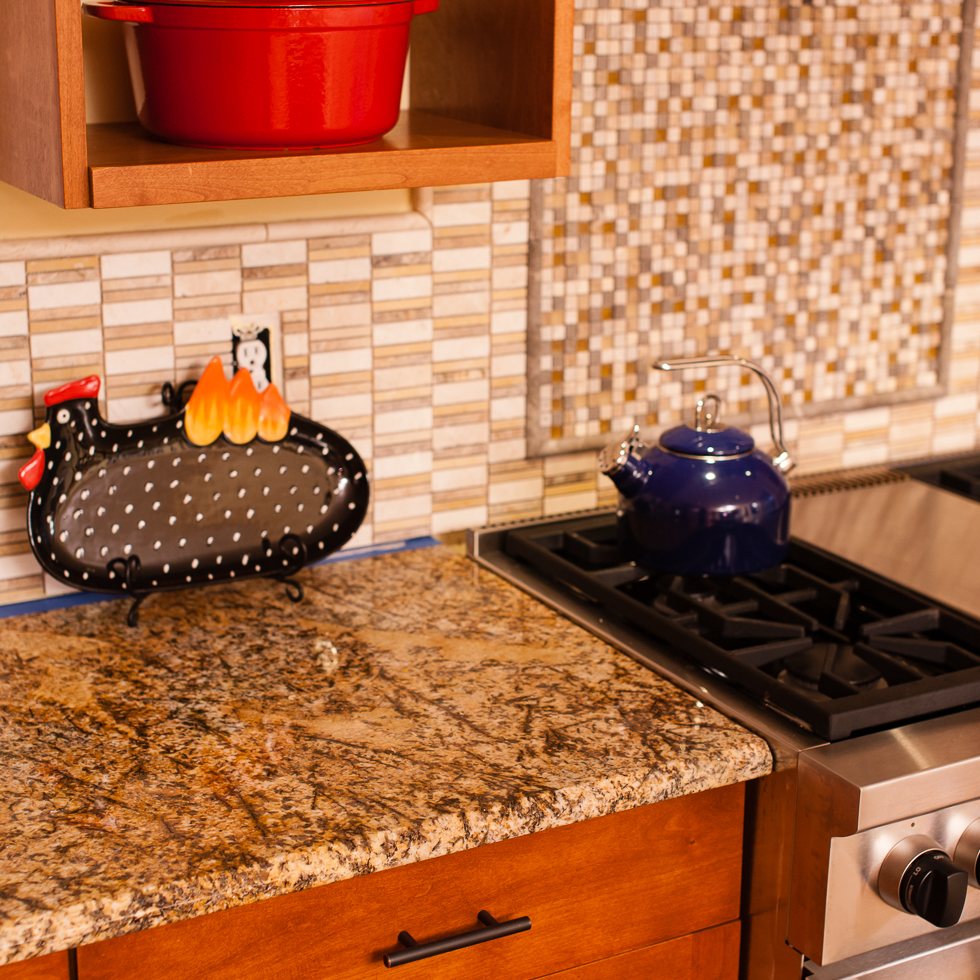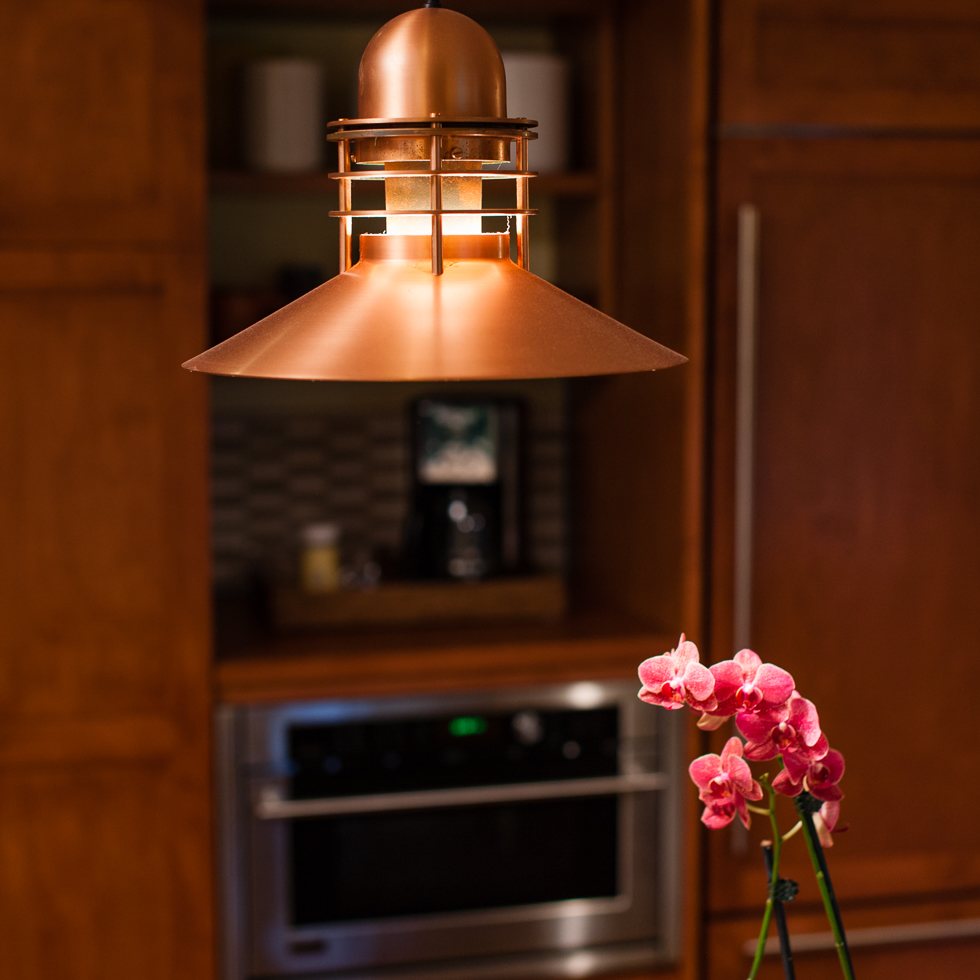Solid Wood Grain Counter Tops
Wood Grain Counter tops highlight both modern and historic kitchen styles
Natural Wood Kitchen design elements

Warmth of wooden counter tops in a historic home
Wood Grain Counter tops may be the cure for the common cold of stainless steel everything kitchens. Showy stones like high maintenance granite and marble and maintenance-free engineered materials like quartz and epoxy-solid surfaces are trying to take over. But we are supplying the resurgence in natural wood countertops. Constructed from specially cured and joined pieces of hardwood laminated with specialty adhesives for strength and moisture stability, they provide a warm organic palette to paint the rest of the kitchen elements with historic accuracy, or modern panache. Wood is wonderfully forgiving, gentle on dishware, and able to absorb or mitigate the noise of busy household chores. Wooden counter tops can be expertly serviced if damaged, dinged, stained, or gouged, our craftsmen are ready to make any needed refreshments.
Wood Grain Counter tops FAQ:
- Can I choose the species type? = Yes
- Can I choose the price point? = Yes
- Can I choose the grain type or angle? = Yes
- Can I specify imperfections or defects? = Yes
- How long will production take? = 2-4 weeks
- Can I supply a tree from my farm or lot in Virginia? = Yes
- Are solid wood grain counter tops within the budget of the average homeowner? = Yes

All wood renovated kitchen countertops.
Solid Wood Construction
Unlike stone, steel or resin, there’s no clatter when you set down a plate or a glass, and dropped dishes are less likely to break. Wood also absorbs and dampens the whir of appliances, while the sound will travel through or be amplified by other more rigid materials. Are Wood Grain Counter tops something you’ve seen this week, this month, this year? Have you ever been in a kitchen or conference room that has used them? If your answer is no then it’s so unique that you’ve never personally viewed it – your kitchen, or your office conference room will be that unique an experience for the people visisiting.

Wooden Countertops blend well into other rooms and look more like furniture than fabricated materials.
Solid Wood Counters

Creative Richmond Kitchen Design
Wood grain is created by the cambium growing rapidly at the beginning of each growing season, generating light colored springwood between the darker lines. As the tree grows in the warmer summer it slows down and produces darker summerwood. Later growth shows in the structure as more dense and harder than the early springwood. The tree’s growth each year follows the weather turning cold so the cambium becomes dormant in the cycle producing distinctive growth rings if you’re looking at a bi-lateral view of the tree’s structure. So to create the long grain effects we use in countertop and cabinet finishes we slice the trunk of the tree in the same direction the tree grew. The overall width of the tree growth is important but the grain slope is important as we cut and kiln dry the piece for your home. Contact us today for low cost, low budget and unique wood grain counter tops and see what we can source for you from our Richmond Virginia headquarters.













